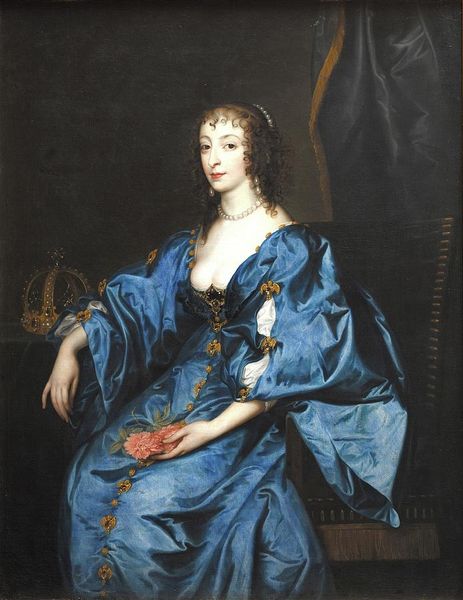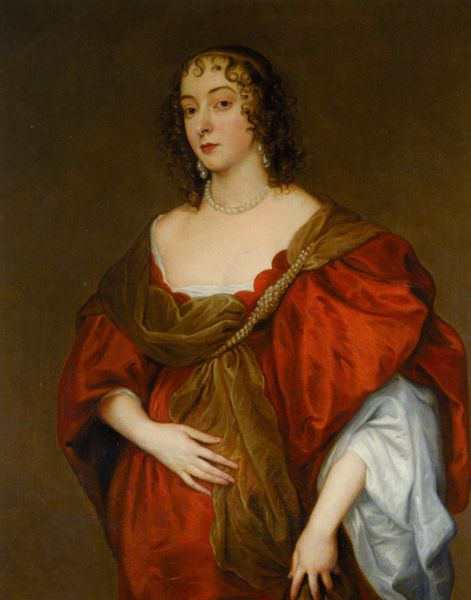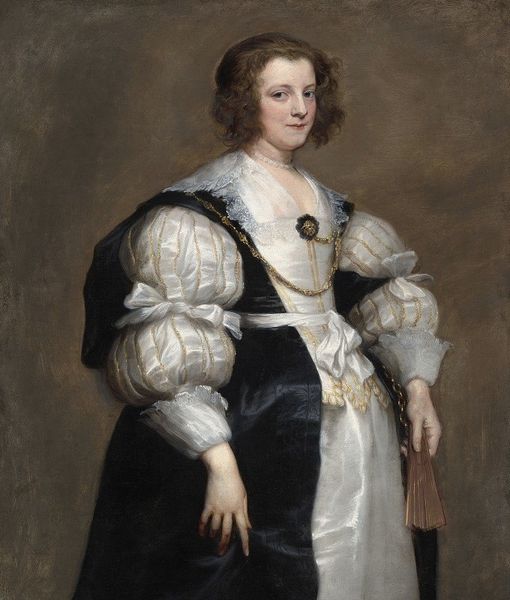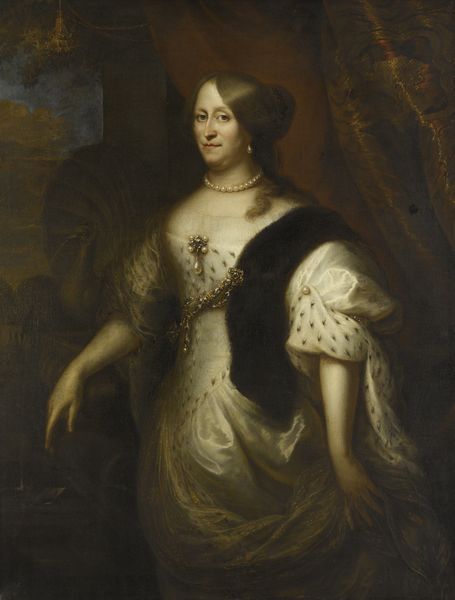
painting, oil-paint
#
portrait
#
baroque
#
painting
#
oil-paint
#
history-painting
Dimensions: 140 x 107 cm
Copyright: Public domain
Editor: Here we have Anthony van Dyck's "Portrait of a Lady" from 1635, done in oil paint. There’s a sort of somber refinement to this piece; her dark dress and the shadowy background are offset by the luminous details of her pearls and lace. How do you interpret the formal elements in this composition? Curator: Immediately, the tension between the flatness of the picture plane and the illusion of three-dimensional space is compelling. Notice how van Dyck uses chiaroscuro to model her form, yet flattens the planes of her dress to draw our eye back to the surface. What does that suggest to you? Editor: That it's more about surface than depth, that the formal elements of light and shape matter more than trying to capture likeness? Curator: Precisely. Van Dyck seems less concerned with individual personality than with constructing a visually stimulating arrangement of shapes, lines, and textures. The crispness of the lace collar, for instance, contrasts wonderfully with the soft folds of the drapery. Have you noticed how her right arm bisects the composition? Editor: Yes, almost like a diagonal line creating sections within the painting. The hand is central in the entire portrait composition. Curator: Indeed. The emphasis becomes about the compositional structure— the arrangement of elements within the frame— rather than biographical details of the sitter. That stark division draws your eye to center stage; a carefully calculated distribution of weight and mass. How does considering this alter your initial impressions of the "somber refinement?" Editor: It makes it seem more deliberate and designed, less about expressing mood, and more about manipulating visual elements for effect. I see it now as something constructed, using the female form as structure and matter, not as subject. Curator: Exactly. Understanding the pictorial space is to consider his compositional elements more as deliberate exercises rather than narrative considerations, it shifts our perspective entirely. Thank you.
Comments
No comments
Be the first to comment and join the conversation on the ultimate creative platform.













